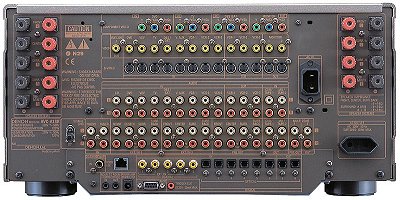Hi.
I've recently aquired a 2nd hand surround sound receiver, in its day it was very expensive, but I paid very little for it so there's every chance it doesn't work properly.
Anyway..... It didn't come with a power cable, so I used one that I had laying around. It's just a 3 prong kettle lead, like the type you'd use for a large guitar amplifier.
The reciever turns on, but immediately says "amp protection, powering down" and turns itself off.
Having browsed the company page, it says the following under the FAQ, which makes me wonder if the problem is using a three pin plug when the recover has only two pins.... And if so, what's the remedy without trying to source the original two prong kettle lead?
Why do the power cords have two prongs instead of three?
To help prevent ground loops, which occur when there is more than one ground path. Often misunderstood, the ground conductor prevents the chassis from becoming live if the AC line touches it. We use double insulation instead, something that may sound unfamiliar, but you've seen it before on power tools. This method may cost a little more, but no one can resort to using a 3-prong to 2-prong adapter to open a ground loop ("cheater" plug in this case since the green wire is used for decoration instead of safety).
I've recently aquired a 2nd hand surround sound receiver, in its day it was very expensive, but I paid very little for it so there's every chance it doesn't work properly.
Anyway..... It didn't come with a power cable, so I used one that I had laying around. It's just a 3 prong kettle lead, like the type you'd use for a large guitar amplifier.
The reciever turns on, but immediately says "amp protection, powering down" and turns itself off.
Having browsed the company page, it says the following under the FAQ, which makes me wonder if the problem is using a three pin plug when the recover has only two pins.... And if so, what's the remedy without trying to source the original two prong kettle lead?
Why do the power cords have two prongs instead of three?
To help prevent ground loops, which occur when there is more than one ground path. Often misunderstood, the ground conductor prevents the chassis from becoming live if the AC line touches it. We use double insulation instead, something that may sound unfamiliar, but you've seen it before on power tools. This method may cost a little more, but no one can resort to using a 3-prong to 2-prong adapter to open a ground loop ("cheater" plug in this case since the green wire is used for decoration instead of safety).


































